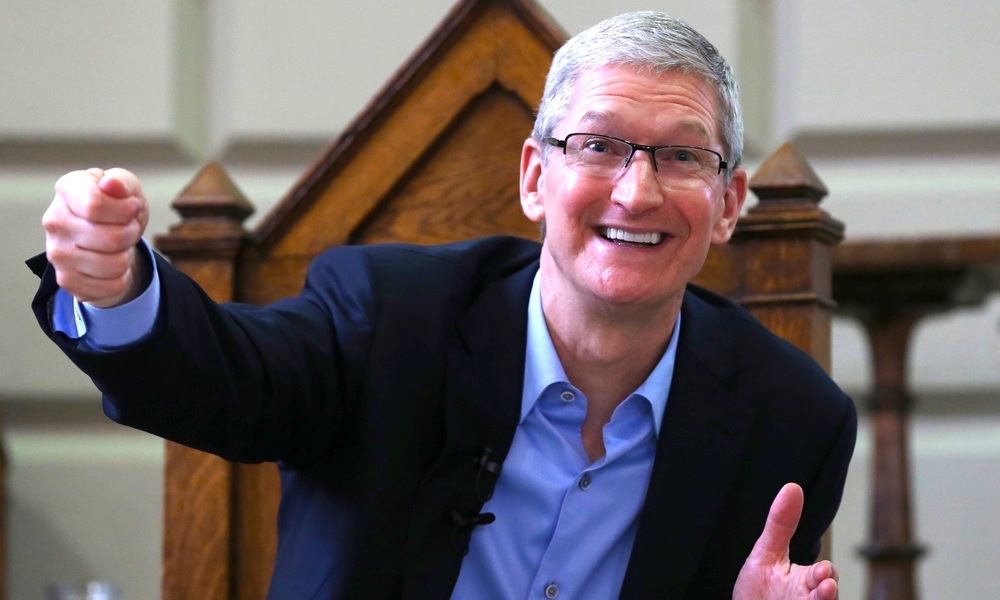Apple Spent Billions (and Lost Nearly 15%) Buying Back Its Own Stock
 Credit: Laura Hutton / Shutterstock
Credit: Laura Hutton / ShutterstockToggle Dark Mode
Apple (NASDAQ: AAPL) has weathered a turbulent year of trading on the U.S. stock market, notching both major gains (as high as $232.07 per share) and major losses (as low as $146.83), from its debut value of $172.26 on January 2, 2018 to its current trading price of ~$156 per share.
And while various hiccups (including reports of less-than-stellar iPhone demand, slashed production and the pretentious ongoing trade war between the U.S. and China), have ultimately played into AAPL’s wild ride this year, a new report put out by Business Insider on Friday highlights (in interesting detail) Apple’s strategy of “ravenously” buying-back shares of its own stock in 2018, noting that within the first three-quarters of the year, Apple spent nearly $63 billion buying back its own shares.
“Through the first nine months of 2018, Apple spent $62.9 billion on share buybacks,” the publication notes, adding that the “record-breaking and staggering sum” happens to equal the tech-giant’s total revenue during the quarter ending September 30, 2018.
A Bad Investment?
Interestingly, several economists speaking to Business Insider pointed out how the traditional purpose of stock buybacks is to “drive the stock price higher and make earnings-per-share look better.”
This may imply that Apple, who bought-back several million of its AAPL shares for as high as $222.07 apiece, according to the report, may have over-estimated the near and long-term volatility and potentiation of its stock.
As noted in a separate report from The Wall Street Journal also published on Friday, Apple’s stock has shed roughly 30 percent-off its peak value of $232.07 per share back on October 3, to its current price of ~$156 per share as of December 28.
This means that the estimated 6.7 percent worth of outstanding shares Apple purchased for nearly $63 billion, are now worth about ~$53.8 billion (as of Wednesday’s historic trading) — representing a total estimated loss of around $9 billion.
Or a Master Plan?
As previously reported, 2018 saw Apple become the world’s first trillion-dollar corporation. And while the tech-giant’s market capitalization is still hovering comfortably around the $750 billion mark, it’s definitely worth pointing out that Apple’s probably not too upset about the losses.
The iPhone-maker boldly announced its plans to buy-back so much of its AAPL stock last December — with CEO Tim Cook expressing how the move will be “good for the economy” — willfully and arbitrarily exposing the tech-giant to the possibility of losses along the lines of (or even worse than) it’s already suffered.
But while Apple can certainly afford the multi-billion dollar loss without disruption to its bottom-line or global operations — its current buy-back strategy is not sustainable, according to sources cited by WSJ.
“If they made an acquisition that decreased in value this much, people would be up in arms,” noted Nell Minow, vice chairwoman of ValueEdge Advisors, adding that Apple’s buy-back — its primary investment in terms of dollars and cents this year — declined “so much, so quickly.”
What’s perhaps most interesting of all, though, is that even despite these losses, Apple’s all ready and rearing-up to buy back more AAPL shares in 2019 — to the tune of +$70 billion — pursuant with its $100 billion buy-back program.
And yet, with so many new Apple products and yet-to-be-unveiled technologies in preparation for release in 2019 and beyond it’s reasonable to assume that AAPL will eventually make-up for all these losses, and then some, anyway.






